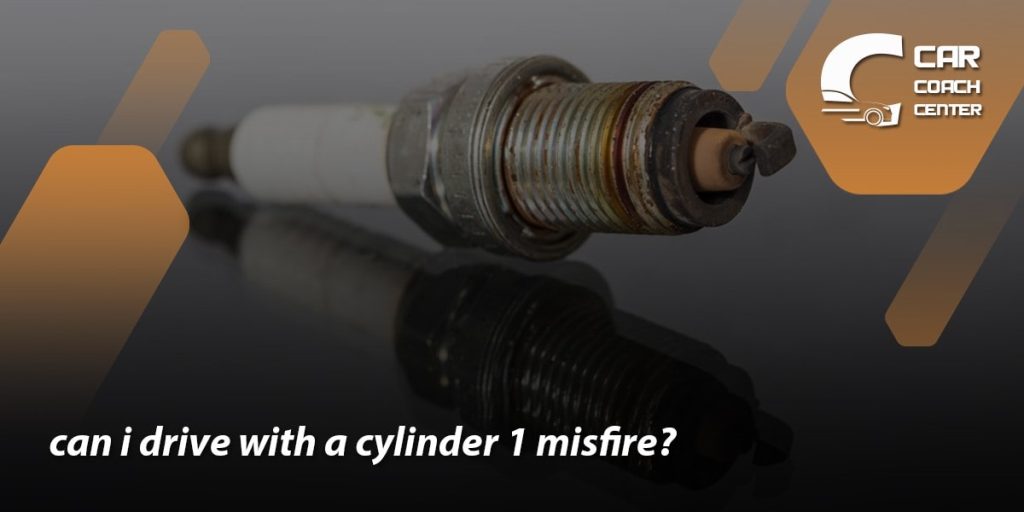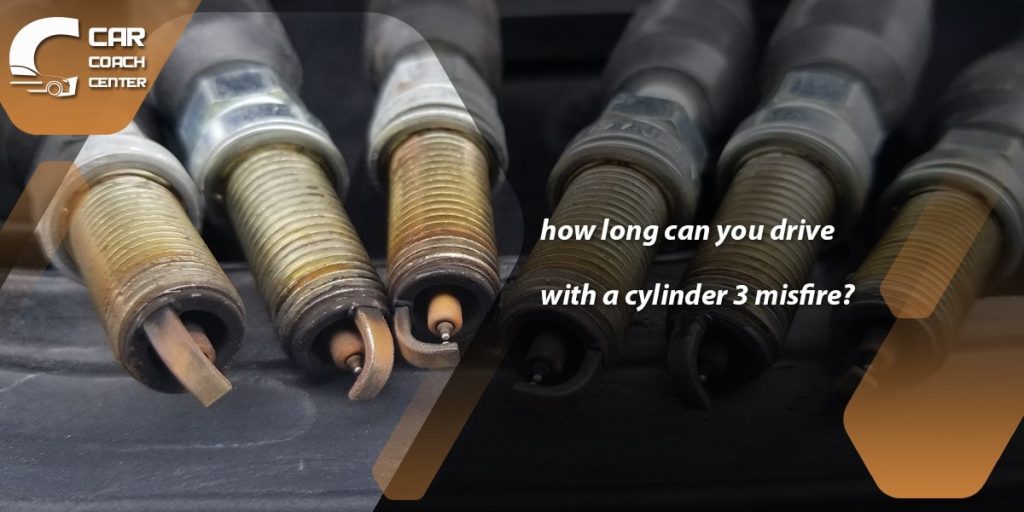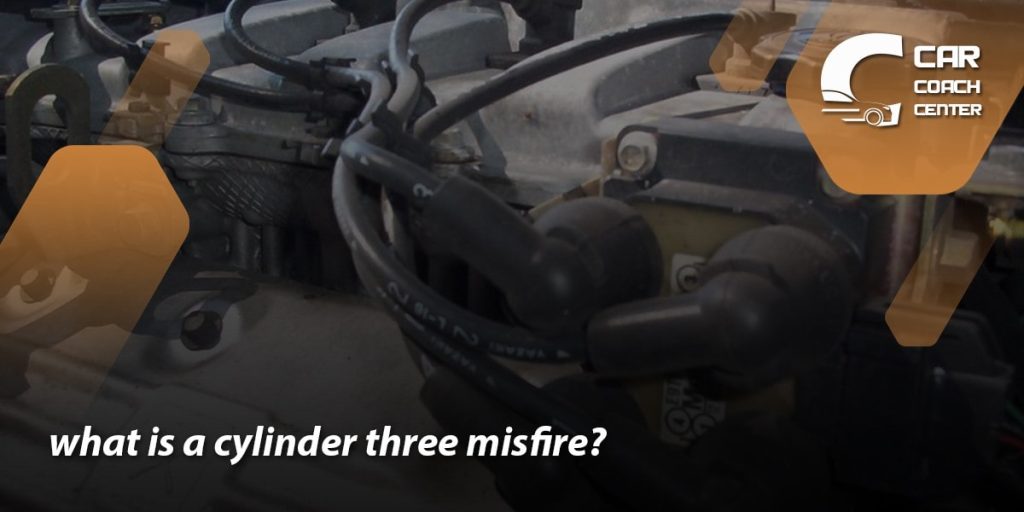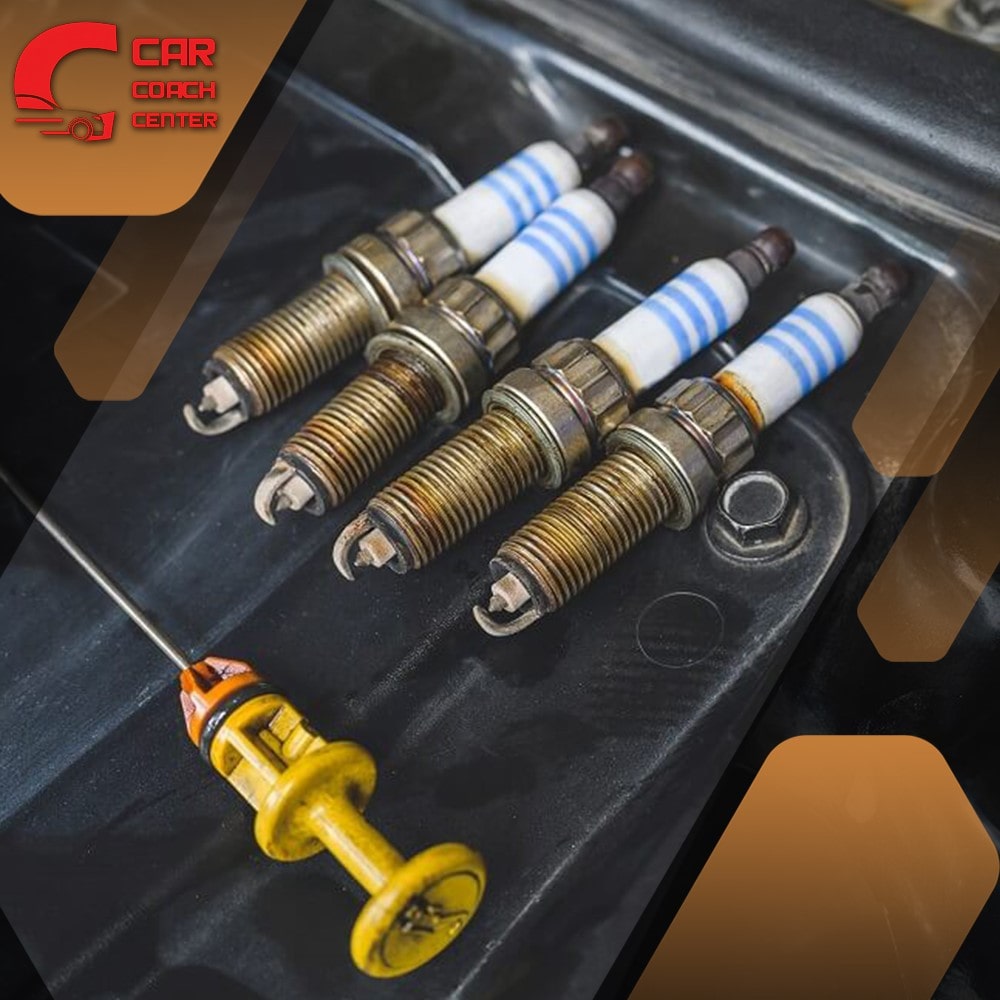Can You Drive With A Cylinder 3 Misfire
A smooth and efficient engine operation is crucial for a pleasant driving experience, but what happens when one of the cylinders misfires? The unsettling sensation of engine vibrations, decreased power, and a flashing check engine light can cause concern for any driver.
Specifically, when faced with a cylinder three misfire, it is natural to wonder about the safety and implications of continuing to drive the vehicle. In this article, we will explore the world of cylinder misfires, focusing on the specific scenario of a cylinder three misfire. We will delve into the mechanics behind these misfires, discuss their impact on engine performance, and shed light on the symptoms drivers should be aware of.

Additionally, we will address the critical question: Can you drive with a cylinder three misfire? This article aims to equip readers with the knowledge needed to make informed decisions and take appropriate action when faced with a cylinder 3 misfire by examining the risks and safety considerations and providing preventive measures and maintenance tips.
The Mechanics Behind Cylinder Misfires: Exploring the Causes
Cylinder misfires can be frustrating and worrisome for any vehicle owner. It’s important to explore their underlying causes to understand why misfires occur. Several factors can lead to a cylinder misfire, ranging from ignition system issues to fuel delivery problems and mechanical failures.
One common cause of a cylinder misfire is a faulty ignition system. The ignition system generates the spark that ignites the air-fuel mixture inside the cylinder. If the spark plug is worn out or damaged, it may fail to produce a strong spark, resulting in a misfire. Similarly, a malfunctioning ignition coil or distributor can disrupt the timing of the spark, leading to misfires.
Another culprit behind cylinder misfires is a problem with the fuel delivery system. If the fuel injector supplying fuel to a specific cylinder becomes clogged or develops a fault, it can disrupt the air-fuel mixture ratio and cause a misfire. Additionally, a strong fuel pump or filter clogged with debris can deliver adequate fuel, leading to misfires.
Mechanical failures within the engine can also contribute to cylinder misfires. For example, a damaged or worn-out valve may not seal properly, allowing fuel and air to escape and disrupting combustion. Similarly, a worn-out piston ring can lead to poor compression, affecting the performance of the cylinder and causing misfires.
Other potential causes of cylinder misfires include a malfunctioning mass airflow sensor, a vacuum leak in the intake manifold, or even a faulty engine control module (ECM) that fails to provide the correct fuel and spark timing instructions.
Understanding the Impact of a Cylinder 3 Misfire on Engine Performance
When a misfire occurs in a specific cylinder, such as cylinder 3, it can significantly impact the engine’s overall performance. The consequences of a cylinder 3 misfire extend beyond mere annoyance and can result in reduced power, increased fuel consumption, and potential damage to other engine components.
One of the immediate effects of a cylinder 3 misfire is a noticeable decrease in engine power. The misfire disrupts the combustion process, leading to an imbalance in power output among the cylinders. As a result, the engine may struggle to generate the same force and acceleration as it would with all cylinders firing correctly. This can be particularly evident during acceleration or when climbing hills, as the engine may feel sluggish and lack power.
In addition to decreased power, a cylinder 3 misfire can lead to increased fuel consumption in addition to decreased power. When the fuel in cylinder 3 fails to ignite properly, it remains unburned and expelled into the exhaust system. This unburned fuel represents wasted energy and can contribute to poor fuel efficiency. The engine compensates for the misfire by adjusting the air-fuel mixture, potentially leading to a richer mixture and higher fuel consumption.
Moreover, a prolonged cylinder 3 misfire can harm other engine components. The unburned fuel can accumulate in the catalytic converter, causing it to overheat and potentially fail. This can result in costly repairs or replacement of the catalytic converter. Additionally, the misfire can cause increased stress and strain on the engine, potentially damaging the pistons, valves, or even the cylinder head over time.
It is crucial to promptly address a cylinder 3 misfire to avoid further complications and costly repairs. The next sections will focus on recognizing the symptoms of a cylinder 3 misfire, enabling drivers to detect and diagnose the issue early on. By taking appropriate action, drivers can mitigate the impact on engine performance, fuel consumption, and the overall health of their vehicles.

Recognizing the Symptoms of a Cylinder 3 Misfire
Detecting a cylinder 3 misfire is essential for addressing the issue promptly and preventing further damage to the engine. There are several key symptoms to be aware of that may indicate a cylinder 3 misfire.
Rough Idling
One of the most common signs of a cylinder 3 misfire is a rough or uneven idle. When cylinder 3 fails to fire properly, it disrupts the smooth rotation of the engine, causing vibrations and an unstable idle. You may feel the car shaking or hear irregular engine sounds while stationary.
Engine Vibrations
In addition to rough idling, a cylinder 3 misfire can also result in noticeable engine vibrations while driving. These vibrations can be felt through the steering wheel, floorboard, or even the entire vehicle. The severity of the vibrations may vary depending on the extent of the misfire.
Loss of Acceleration and Power
A cylinder 3 misfire can cause a significant loss of power and acceleration. When the cylinder fails to contribute its share of power to the engine, it affects the overall performance. You may experience sluggish acceleration, reduced responsiveness, and difficulty maintaining speed.
Decreased Fuel Efficiency
If cylinder 3 is not firing correctly, unburned fuel can enter the exhaust system. This can result in a rich fuel mixture and increased fuel consumption. Keep an eye on your fuel efficiency. If you notice a sudden decrease in mileage, it could indicate a cylinder 3 misfire.
Check Engine Light
A cylinder 3 misfire often triggers the vehicle’s onboard diagnostics system, causing the check engine light to illuminate. While the check engine light alone cannot pinpoint the exact cause, it is an important indicator that something is amiss and requires attention.

The Importance of Timely Diagnosis and Repair for Cylinder Misfires
It is important to address the issue promptly when faced with a cylinder misfire, such as a cylinder 3 misfire. Ignoring or neglecting a misfire can have severe consequences for your vehicle’s performance and wallet. Here are several reasons why timely diagnosis and repair are crucial.
Prevent Further Damage
A misfire indicates an underlying problem within the engine. If left unattended, the issue can escalate and lead to more extensive damage. For example, a misfiring cylinder can cause unburned fuel to enter the catalytic converter, resulting in overheating and potential failure. Timely diagnosis and repair can prevent additional complications and the need for costly repairs.
Optimize Engine Performance
A cylinder misfire directly impacts engine performance. With a misfiring cylinder, the engine operates at reduced power, compromising acceleration, responsiveness, and overall driving experience. Addressing the misfire promptly can restore optimal engine performance and regain smooth operation.
Preserve Fuel Efficiency
A misfire can disrupt the air-fuel mixture, causing an imbalance and potentially leading to increased fuel consumption. This decrease in fuel efficiency impacts your wallet and contributes to unnecessary carbon emissions. Timely repair ensures the engine operates efficiently, promoting better fuel economy and reducing your environmental footprint.
Avoid Catalytic Converter Damage
A misfire can lead to unburned fuel reaching the catalytic converter. Over time, this can cause the converter to overheat and fail, resulting in a costly replacement. By addressing the misfire promptly, you can prevent damage to the catalytic converter and save yourself from an expensive repair.
Ensure Safety
A misfire can compromise your vehicle’s overall stability and control. It can cause engine vibrations, loss of power, and unpredictable performance, increasing the risk of accidents, especially in critical situations such as merging onto highways or overtaking other vehicles. Timely repair of the misfire helps maintain your and your passengers’ safety.
Can You Drive with a Cylinder 3 Misfire? Weighing the Risks and Safety Considerations
When faced with a cylinder 3 misfire, it is crucial to consider the risks and safety implications before deciding whether to continue driving. While the misfire may tempt you to keep driving to your destination, it’s important to understand the potential hazards involved.
Increased Emissions
A cylinder misfire can increase emissions as unburned fuel enters the exhaust system. This contributes to environmental pollution and can lead to regulatory compliance issues in areas with strict emission standards.
Catalytic Converter Damage
A prolonged misfire can cause unburned fuel to accumulate in the catalytic converter, leading to overheating and potential failure. The catalytic converter plays a critical role in reducing harmful emissions, and a damaged converter can result in reduced efficiency and increased emissions.
Potential Engine Damage
Ignoring a cylinder 3 misfire can strain the engine, potentially damaging other components such as the valves, pistons, or cylinder head. This can result in costly repairs and even engine failure if addressed.
Risk of Stalling
A severe misfire can cause the engine to stall unexpectedly, leading to loss of power and control. This can be particularly dangerous when immediate acceleration or maneuvering is required, such as merging onto highways or passing other vehicles.
Compromised Performance and Safety
A misfiring cylinder affects the vehicle’s overall performance. Reduced power, rough idling, and decreased acceleration can compromise your ability to respond to driving conditions effectively, potentially increasing the risk of accidents.

Preventive Measures and Maintenance Tips to Avoid Cylinder Misfires
Preventing cylinder misfires is essential for maintaining the health and performance of your vehicle’s engine. By following these preventive measures and maintenance tips, you can reduce the likelihood of experiencing cylinder misfires:
Regular Maintenance
Adhere to your vehicle’s recommended maintenance schedule, which typically includes spark plug replacement, ignition system inspections, and fuel system cleaning. These routine maintenance tasks help ensure that all components involved in the combustion process are in good working condition.
Quality Fuel and Fuel Filter Replacement
Use high-quality fuel that meets the manufacturer’s specifications. Poor-quality or contaminated fuel can contribute to cylinder misfires. Regularly replace the fuel filter as recommended to ensure proper fuel flow and prevent clogs.
Air Filter Maintenance
Keep the air filter clean and replace it regularly. A clogged or dirty air filter can restrict airflow to the engine, affecting the air-fuel mixture and potentially leading to misfires.
Fuel Injector Cleaning
Periodically clean the fuel injectors to prevent clogs and ensure proper fuel atomization. Dirty or clogged fuel injectors can disrupt the fuel spray pattern, leading to an imbalanced air-fuel mixture and misfires.
Careful Handling of Ignition Components
When replacing spark plugs or other ignition components, handle them carefully to avoid damaging the electrodes or insulators. Damaged spark plugs can result in inconsistent firing and misfires.
Avoiding Engine Overheating
Proper engine cooling is vital to prevent overheating, which can contribute to misfires. Ensure that your vehicle’s cooling system is functioning correctly, maintain proper coolant levels, and address any cooling system issues promptly.
Timely Diagnostic Scans
If you notice any symptoms of a misfire or the check engine light illuminates, have the vehicle promptly scanned by a qualified mechanic. Diagnostic scans can pinpoint the specific cylinder misfire and identify any underlying issues.
Conclusion
In conclusion, understanding the mechanics, impact, and risks associated with a cylinder 3 misfire is crucial for every vehicle owner. By exploring the causes of misfires, recognizing the symptoms, and considering the importance of timely diagnosis and repair, we gain valuable insights into effectively addressing this issue.
While driving with a cylinder 3 misfire poses risks to engine performance, emissions, and overall safety, it is clear that preventive measures and prompt maintenance play a pivotal role in preventing misfires. Regular inspections, adherence to maintenance schedules, and proper handling of ignition and fuel system components can significantly reduce the likelihood of misfires and ensure a smooth and reliable driving experience.
By prioritizing the health of your vehicle’s engine and taking proactive measures, you can enjoy enhanced performance, fuel efficiency, and peace of mind. For more automotive tips, resources, and information, visit carcouchcenter.com, where you can find valuable insights to help you maintain and optimize your vehicle.
Can I drive my car with a cylinder 3 misfire?
Driving with a cylinder 3 misfire is not recommended due to potential risks to engine performance, fuel efficiency, and safety.
What causes cylinder 3 to misfire?
Cylinder 3 misfires can be caused by various factors, including ignition system issues, fuel delivery problems, and mechanical failures within the engine.
How can I prevent cylinder misfires?
Regular maintenance, such as spark plug replacement, fuel system cleaning, and proper handling of ignition components, along with using quality fuel, can help prevent cylinder misfires.


